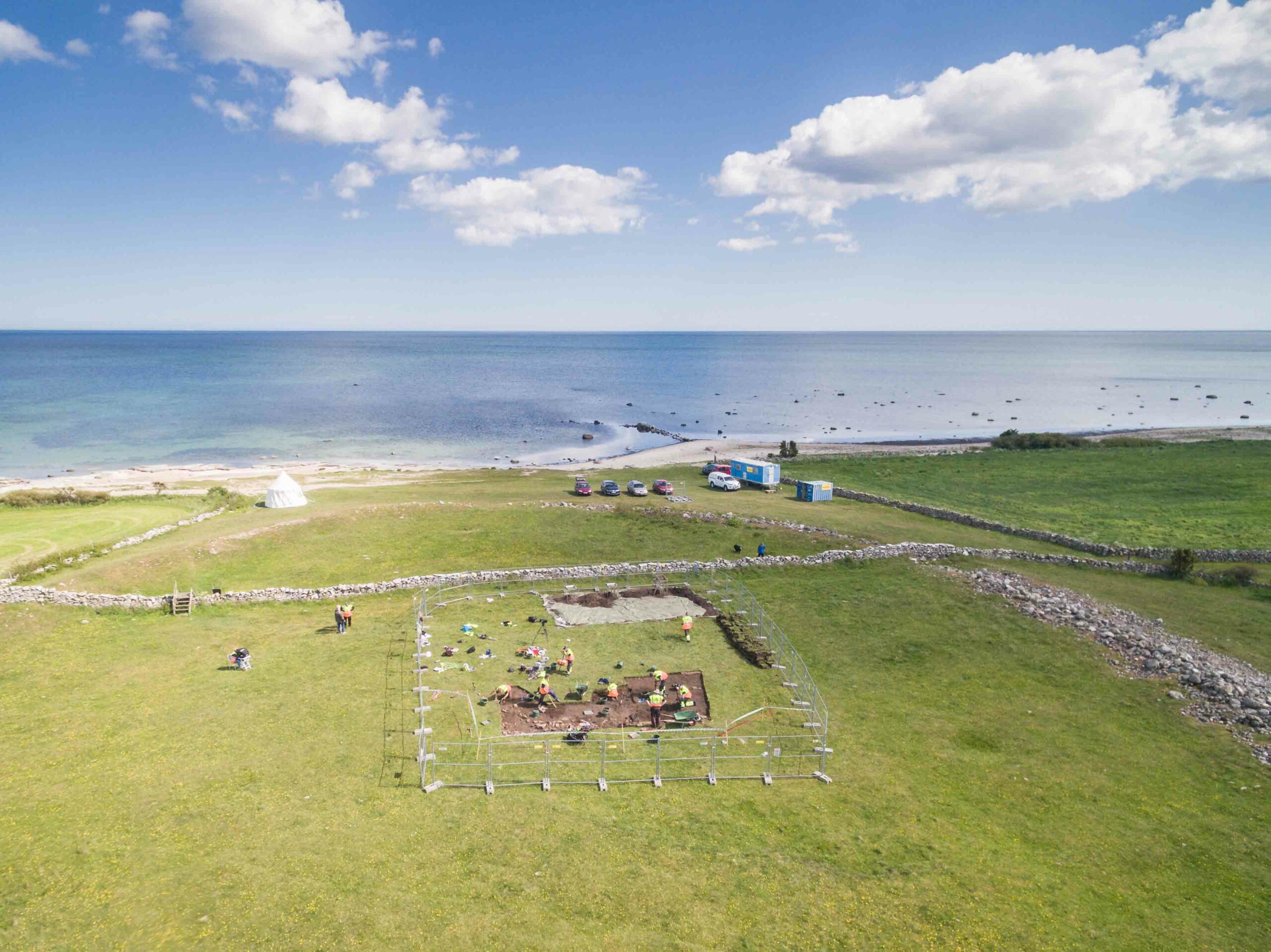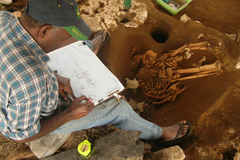
VANUATU

VANUATU: Analysis of seven 3,000-year-old skulls from the oldest cemetery in the South Pacific, on Efate, an island in Vanuatu, is helping explain how the region was settled. The people of this island nation today resemble Melanesians—natives of Australia and New Guinea—more than Polynesians, such as natives of New Zealand and Hawaii. Osteological data are showing that a people called the Lapita, who first colonized the Pacific, looked more like Polynesians. Melanesians apparently came later and the groups intermarried. In places such as Vanuatu and Fiji, Melanesian traits won out, while Polynesian ancestry dominated elsewhere, as people island-hopped to the east. —Samir S. Patel

EAST TIMOR

EAST TIMOR: For 45,000 years, people on Timor coexisted with the biggest rats the world has ever known, some upwards of 10 pounds. A project there found new fossils from several giant rat species previously undocumented by science. Cut and burn marks on some bones indicate that people ate the rodents, but it wasn’t until about 1,000 years ago that the creatures went extinct (related species still exist elsewhere in maritime Southeast Asia). Paleontologists speculate that the introduction of metal tools around that time allowed people to clear more giant rat habitat. —Samir S. Patel

EGYPT

EGYPT: It took eight weeks of delicate surgery—using some traditional materials—but the mask of Tutankhamun is now back on display at the Egyptian Museum after its long beard was knocked off by museum workers and then hastily reattached using epoxy resin. The concern was that the clumsy, crusty repair job would be irreversible, but an international team removed the epoxy with wooden tools and has reattached the beard with beeswax. —Samir S. Patel
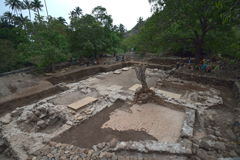
CAPE VERDE

CAPE VERDE: “It now presents a melancholy, but very picturesque appearance....We visited a collection of buildings, of which an ancient church formed the principal part,” Charles Darwin wrote of his visit to Cidade Velha, former capital of what was then a Portuguese trading colony. Researchers have found the remains of a 500-year-old church that may have been the one he visited. It is the oldest building in the islands, and the oldest known European church in the tropics. As many as 1,000 people, many of them African slaves, are likely buried beneath. —Samir S. Patel

GREECE

GREECE: It can be surprising to think of Greece outside of the context of the classical world, but it has clearly been occupied for ages. The recent excavation of the site of Marathousa 1 has revealed exceptionally preserved animal remains and stone tools from roughly 300,000 to 600,000 years ago, including the butchered remains of a Palaeoloxodon antiquus, a straight-tusked elephant that could grow up to 13 feet tall. —Samir S. Patel

AUSTRIA

AUSTRIA: It had once been assumed that Christopher Columbus brought syphilis back to Europe from the New World. That theory has been challenged, and now may be quite dead, as osteologists have found evidence of congenital syphilis—which is passed from pregnant mother to unborn child—among remains buried under the cathedral square in St. Pölten, dating to the early 15th century. The disease was identified by telltale changes to the shape of growing teeth. —Samir S. Patel
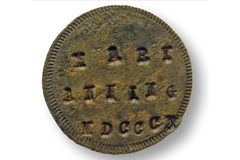
ENGLAND

ENGLAND: On Church Cliff Beach in Lyme Regis, a beachcomber recently found a small metal token inscribed “MARY ANNING MDCCCX” on one side and “LYME REGIS AGE XI” on the other. Anning is a legend in paleontology—discoverer of the first Ichthyosaurus and the first nearly complete Plesiosaurus. Researchers suspect the token might have been a lost gift from her father, a cabinetmaker and the source of her passion for fossil-collecting, on the occasion of her 11th birthday, in 1810, the same year he died. —Samir S. Patel
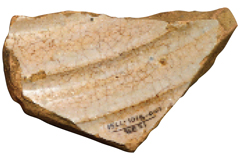
FLORIDA

FLORIDA: In 1559, Spanish nobleman Don Tristán de Luna y Arellano established the first multiyear European settlement in the United States, in what is today Pensacola. Undone by bad luck, bad planning, and bad weather, the settlement lasted two years. Two shipwrecks from the ill-fated colony have been found and studied (“Sunken Dreams,” November/December 2010), but until now the location of the settlement itself was unknown. The discovery of mid-16th-century Spanish artifacts now has archaeologists convinced they have identified the long-lost site, within sight of the wrecks. —Samir S. Patel

NEW MEXICO

NEW MEXICO: The “great houses” built by Puebloans in Chaco Canyon may appear, at first glance, to be made of stone alone, but wood was just as important a building material. Using a technique called dendroprovenance, researchers can now trace the wood, from 240,000 trees, to two mountain ranges, each about 50 miles away. Before A.D. 1020, most came from the Zuni Mountains to the south, but after 1060, it came from the Chuska Mountains to the west. The switch coincided with a flourishing of Chacoan culture. —Samir S. Patel
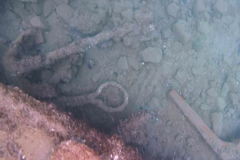
ALASKA

ALASKA: Ships’ captains have always relied on experience and intuition to keep cargo, passengers, and crew safe. But sometimes the sea is inscrutable, such as in 1871, when the captains of 33 whaling ships counted on a wind shift to drive ice out to sea. The wind refused, and the fleet was destroyed by pack ice in just weeks, stranding more than 1,200 people—all of whom were rescued. Maritime archaeologists have now found the remains of two of those ships, in part because climate change means less ice and more access to Arctic wreck sites. —Samir S. Patel







